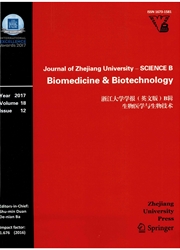

 中文摘要:
中文摘要:
目的:通过采用无菌土培培养方法,阐明外源高铵态氮施用量与水稻幼苗生长、土壤吸附态氨基酸吸收之间的关系。创新点:借助无菌培养和15N同位素示踪方法,揭示高铵态氮浓度条件下土壤吸附态氨基酸对水稻幼苗生长发育及其氮营养贡献的影响。方法:采集两种不同生态系统的土壤A和B,经0.5mol/LK2S04连续淋洗5次,121。C灭菌30min,15N-甘氨酸处理后,根据甘氨酸吸附曲线(图1)确定甘氨酸吸附饱和点和吸附半饱和点,然后向十壤中添加一些不同浓度的铵态氮,水稻幼苗无菌培养21天后,用MAT-271质谱仪测定水稻幼苗氨基酸吸收量。结论:实验结果表明土壤甘氨酸吸附能力大小与土壤理化性质紧密相关,如有机质和阳离子交换量。外源高铵态氮水平显著抑制水稻幼苗生长发育(P〈0.05),但甘氨酸吸收及其氮营养贡献与甘氨酸吸附能力大小无关,而与十壤吸附态甘氨酸和铵态氮的浓度比值显著相关(P〈0.05)。经过21天的无菌培养,土壤吸附态氨基酸对水稻的氮营养贡献率达8.8%~22.6%,表明土壤吸附态氨基酸理论上可能作为植物的一种潜在重要营养氮源。
 英文摘要:
英文摘要:
In recent years, excessive use of chemical nitrogen (N) fertilizers has resulted in the accumulation of excess ammonium (NH4+) in many agricultural soils. Though rice is known as an NH4+-tolerant species and can directly absorb soil intact amino acids, we still know considerably less about the role of high exogenous NH4+ content on rice uptake of soil amino acids. This experiment examined the effects of the exogenous NH4+ concentration on rice uptake of soil adsorbed glycine in two different soils under sterile culture. Our data showed that the sorption capacity of glycine was closely related to soils' physical and chemical properties, such as organic matter and cation exchange capacity. Rice biomass was significantly inhibited by the exogenous NH4+ content at different glycine adsorption concentrations. A three-way analysis of variance demonstrated that rice glycine uptake and glycine nutritional contribution were not related to its sorption capacity, but significantly related to its glycine:NH4+ concentration ratio. After 21-d sterile cultivation, the rice uptake of adsorbed glycine accounted for 8.8%-22.6% of rice total N uptake, which indicates that soil adsorbed amino acids theoretically can serve as an important N source for plant growth in spite of a high NH4+ application rate. However, further studies are needed to investigate the extent to which this bioavailability is realized in the field using the 13C, 15N double labeling technology.
 同期刊论文项目
同期刊论文项目
 同项目期刊论文
同项目期刊论文
 Effects of iron and zinc foliar applications on rice plants and their grain accumulation and grain n
Effects of iron and zinc foliar applications on rice plants and their grain accumulation and grain n Responses of rice production, milled rice quality and soil properties to various nitrogen inputs and
Responses of rice production, milled rice quality and soil properties to various nitrogen inputs and Effects of nitrogen application rates on rice grain yield, nitrogen use efficiency and water quality
Effects of nitrogen application rates on rice grain yield, nitrogen use efficiency and water quality Effects of nitrogen rate and nitrogen form on glycine uptake by pakchoi(Brassica chinensis L.) under
Effects of nitrogen rate and nitrogen form on glycine uptake by pakchoi(Brassica chinensis L.) under 期刊信息
期刊信息
